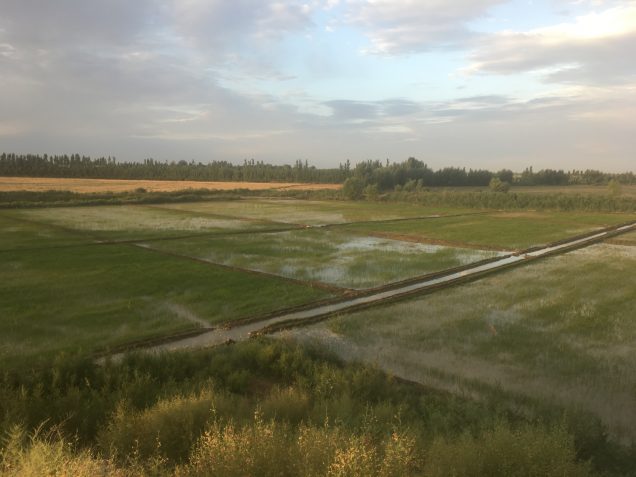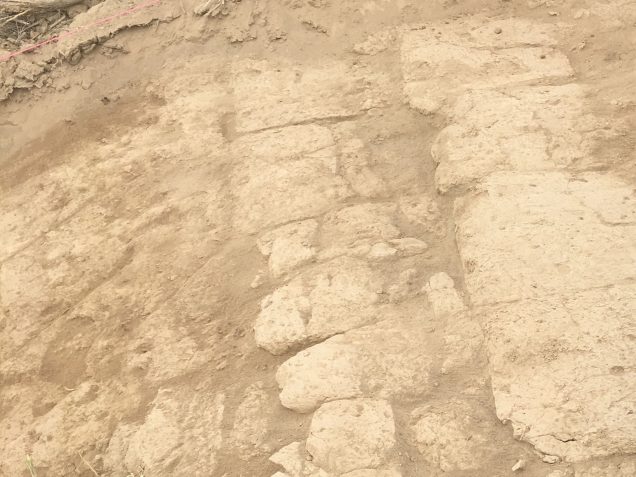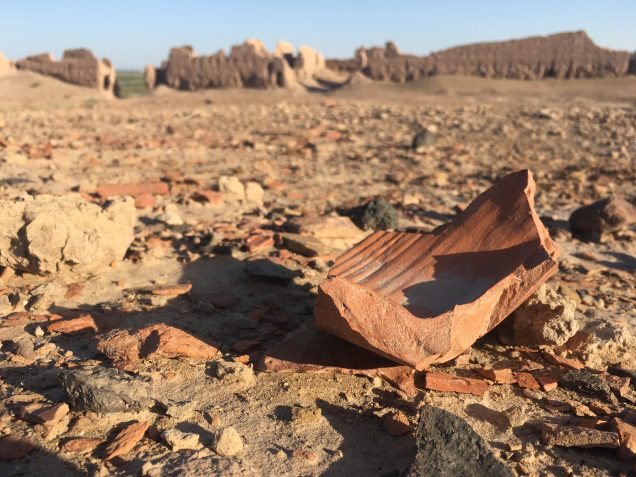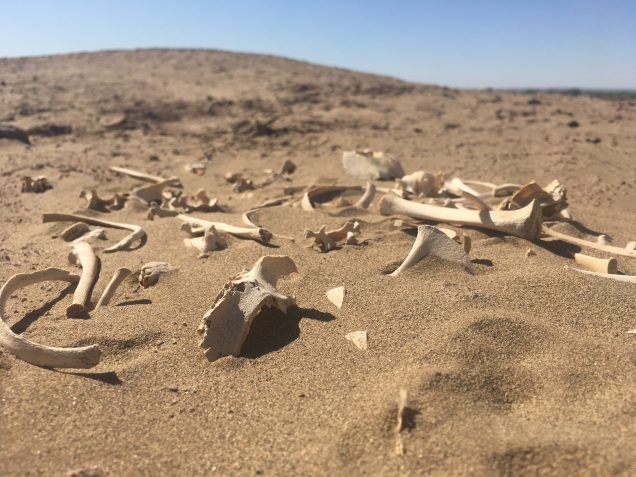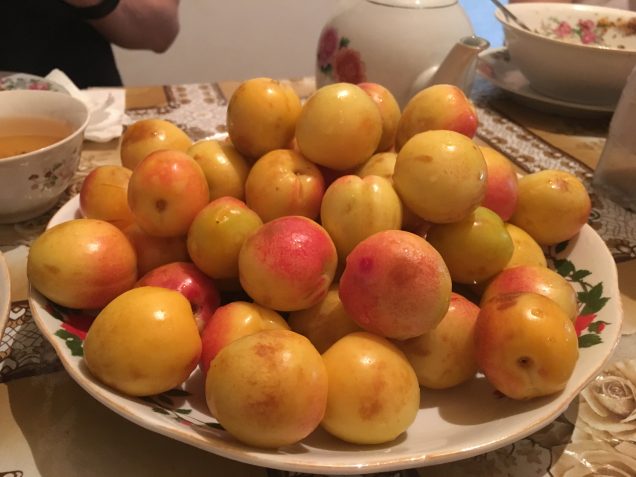Khorezm Ancient Agriculture Project
Project Overview
The Khorezm Ancient Agriculture Project (KAAP) investigates agricultural development immediately prior to and during the Early Islamic Period in Khorezm, Uzbekistan. This project began fieldwork in 2018 with archaeological investigation of the site of Sim-Ata, one of the few remaining vestiges of ancient Kath, a famed Central Asian city that rose to prominence during the Islamic Golden Age. Kath was founded in the 4th c. CE and became an important agricultural and trade hub in the 9th-10th c. CE, one of the few cities of the area occupied continuously through the arrival of Islam to the region. Despite its significance, little is known about Kath because it was completely destroyed by flooding in the medieval period.
The first field season of KAAP explored the preserved subsidiary site of Sim-Ata, which lies at the head of Kath’s main canal. Our excavations included the first systematic, multiproxy, blanket strategy for the recovery and analysis of archaeobotanical remains in the Khorezm region. We seek to answer a central question about the state of agriculture in the period leading up to the Arab conquest in 712 CE and its impacts on Islamic period cultural development. Our intent is to identify the environmental conditions, crops, and subsistence strategies that operated at Sim-Ata, while also providing a baseline understanding of the potential for modern archaeobotanical research in the Khorezm region.
For more information on the project, Khorezm Ancient Agriculture Project (KAAP).
Environmental Archaeology Lab Member Involvement
John M. Marston is the director of paleoethnobotany for KAAP. Despite the acknowledged significance of Khorezm as an important (and indeed, the largest) agricultural oasis in Central Asia from the 7th c. BCE onwards, systematic archaeobotanical recovery has never been undertaken anywhere in the Khorezm region. Sim-Ata was the first site in the region to be so investigated. Sydney Hunter assisted in sampling, flotation, preliminary analysis, and training of fellow archaeologists to continue this sampling method for future excavations. Marston and Hunter instituted a sampling and on-site flotation strategy of all excavation units, identified features and surrounding matrices, and laboratory analysis is ongoing. Hunter processed, analyzed, and interpreted the macrobotanical and microbotanical material for a UROP project and her senior honors thesis, respectively.
Related Publications
2019
Brite, Elizabeth B., and John M. Marston. New endeavors to understand agriculture in ancient Khorezm: a contribution in honor of G. Khozhaniyazov. In History and Archaeology of the Aral Area. Edited by T. Shirinov, pp. 56-70. Karakalpak Department of the Academy of Sciences of the Republic of Uzbekistan, Nukus.
2017
Elizabeth Baker Brite, Gairatdin Khozhaniyazov, John M. Marston, Michelle Negus Cleary, and Fiona J. Kidd. 2017. Kara-tepe, Karakalpakstan: Agropastoralism in a Central Eurasian Oasis in the 4th/5th century A.D. Transition. Journal of Field Archaeology 42: 519-529.
2013
Elizabeth Baker Brite and John M. Marston. 2013. Environmental change, agricultural innovation, and the spread of cotton agriculture in the Old World. Journal of Anthropological Archaeology 32: 39-53.
Related Presentations
2019
Brite, Elizabeth Baker, Gairatdin Khozhaniyazov, John M. Marston, and Sydney Hunter. “Provisioning the flood-prone city: the urban center of Kath (Kat) in Khorezm” Paper presented at the Deutsches Archäeologisches Institut, Berlin, international conference “Beyond the Walls: Provisioning Cities in Ancient Eurasia”
Hunter, Sydney A., Kali R. Wade, Elizabeth Baker Brite, and John M. Marston. “Phytolith perspectives on agriculture in the Islamic Golden Age city of Kath” Poster presented at the 42nd Annual Conference of the Society of Ethnobiology
Marston, John M., Sydney A. Hunter, and Elizabeth Baker Brite. “Macrobotanical perspectives on agriculture in the Islamic Golden Age city of Kath” Poster presented at the 42nd Annual Conference of the Society of Ethnobiology

